The co-design of new technology with communities has benefits and trade-offs. Our colleagues and we at Engineers Without Borders Australia learned something about what is gained and lost in that process on recent excursions to rural Cambodia.
Co-design is a novel approach for engineering projects in international development. We complete each stage of the design process collaboratively with the community that will use the end solution. The process is complex, however, and can lead to competing priorities that need to be resolved during a project. Without clear consideration of the desired outcomes during the planning phases of the project, decision making can be reactive and inconsistent with intended objectives.
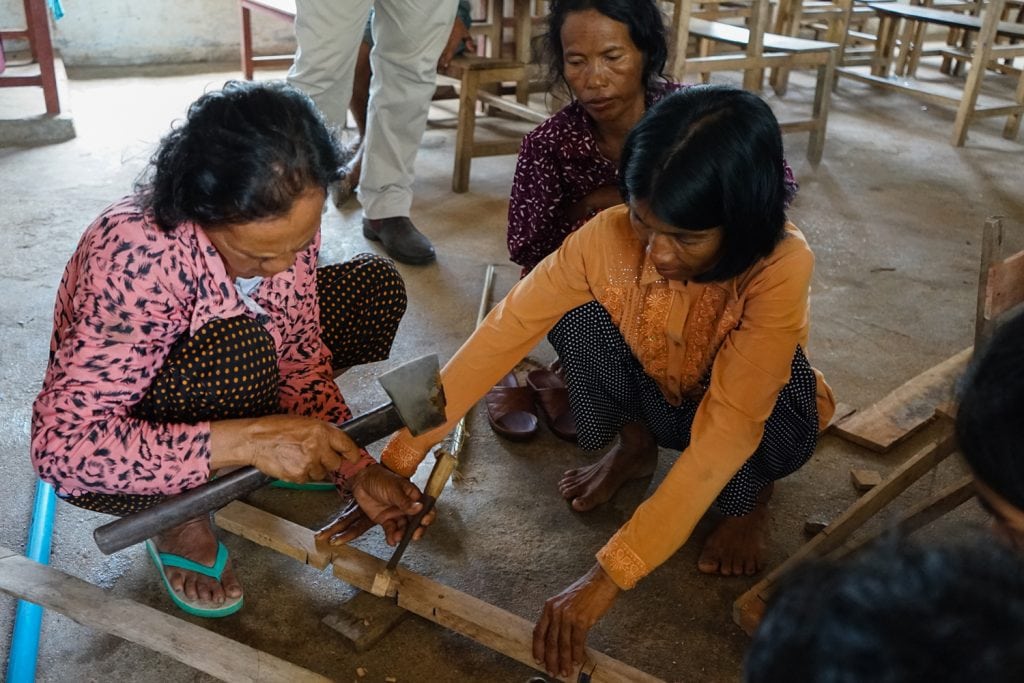
Two members of the rural Cambodian community where a team with Engineers Without Borders Australia worked chisel notches while building the frame for a wooden cart prototype. Photo: Andrew Drain
In 2017, we conducted a co-design project in rural Cambodia, in the Kampong Tralach district of Kampong Chhnang province. We aimed to design assistive technologies that helped people with disabilities farm their small plots more easily. In practice, this resulted in the design of two products: a locally manufacturable, low-cost drum seeder, and an attachment for an ox-drawn plough that assisted people with mobility limitations when preparing fields. From this project, we identified two key trade-offs that needed to be addressed for effective co-design.
Trade-off One: Project Progress Vs. Community Inclusion in the Design Process
Development projects are subject to strict timelines and finite funding. They are therefore under pressure to produce a valuable impact as fast as possible. Community members do not necessarily feel that same urgency, however. That tension creates moments when a facilitator must decide whether to do something that progresses the project quickly, or to slow the project, but meaningfully involve all community members in the process.
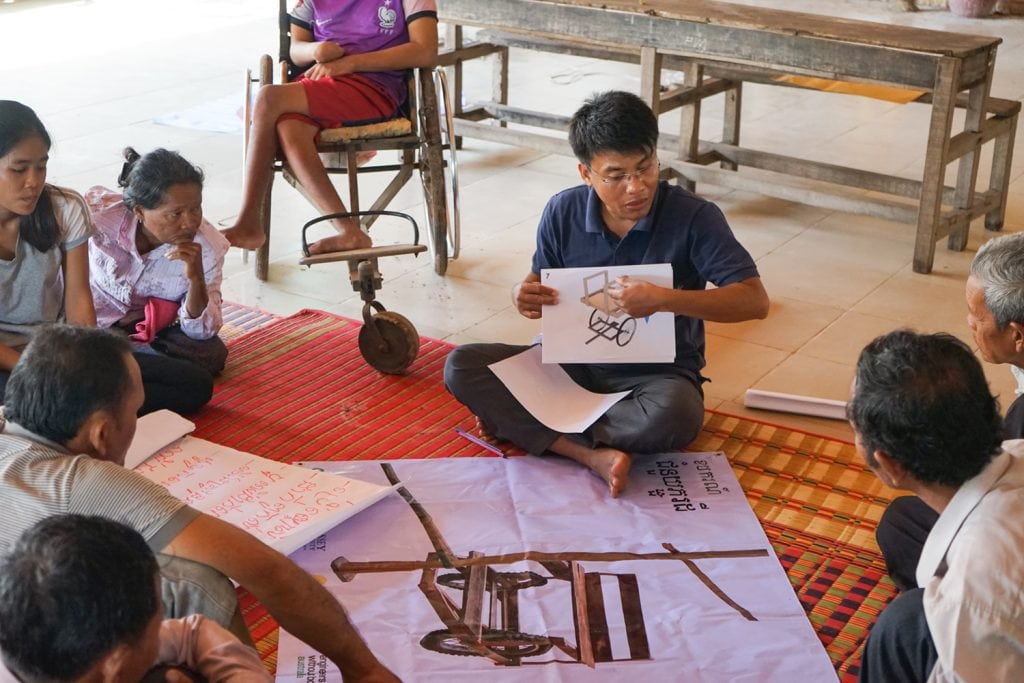
A designer presents a new design for an ox-drawn cart that aims to assist community members when they plow their fields. Photo: Andrew Drain
For example, the design of the ox-drawn plough attachment moved more slowly than expected and fell behind the progress requirements. Because of this, the project team moved quickly to complete detailed design and engineering analysis without input from the community. While ensuring progress, this decision resulted in a solution that did not fully meet the community’s expectations. Therefore, a further iteration was required to ensure the product was appropriate for the community. This meant that while trying to prioritize progress, a lack of community inclusion resulted in a slower process than intended.
The lesson we learned from this experience was that there are positive outcomes associated with prioritizing inclusion, irrespective of your aims and objectives. However, this will always be impacted by the project’s external constraints, such as project funding and timing. Therefore, the project team must be clear about its constraints and look to maximize opportunities for inclusion while meeting external milestones.
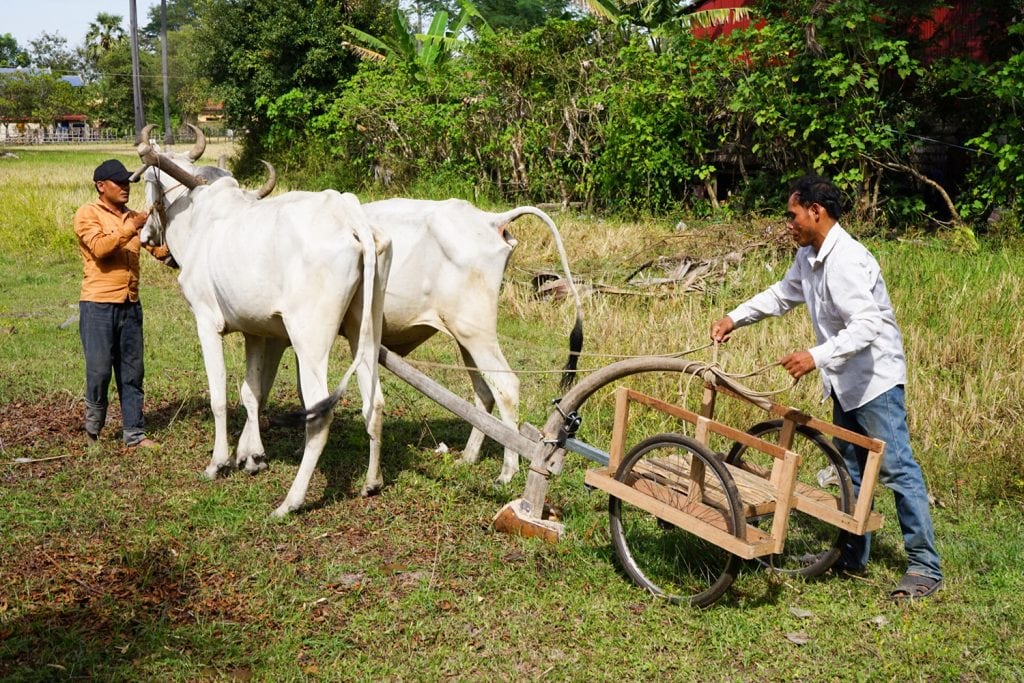
A community member tests an engineer-designed plow attachment to verify its dimensions, usability and additional loading placed on the two oxen. Photo: Andrew Drain
Trade-off Two: Product Effectiveness in Meeting Requirements Vs. Community Empowerment
We can design a project to have the greatest possible impact on the community within our time and budgets, or we can design it to more greatly empower the community through involving them in the process. The two outcomes may not always coincide and the desirable outcome with be specific to each situation. Great technology impact speaks for itself, but empowered communities can become more resilient and confident to independently solve future problems.
During co-design projects, there will be times when the community is in control of the design process and the project’s direction. This can lead two ways. The project could continue in the intended direction, or it could pivot away from the defined product requirements. If the latter occurs, the project team will be faced with a trade-off: re-pivot the project back toward defined requirements, or allow the community to control the direction and build creative capacity.

(Left) a community member tests a locally designed drum seeder to verify the reliability of the dosing system and usability of the frame. (Right) a community member tests an engineer-designed drum seeder. Photos: Andrew Drain
Let’s look at the example of the drum seeder. Two different designs were created. An engineer from the project team led the first design, with much of the design work occurring outside of workshops we had established for collaboration with the community. This design met the defined product requirements and was considered an effective solution. However, there was less opportunity for the community to give input, and therefore less opportunity for community empowerment.
A community member led the second design. Much of the design work occurred independently between workshops and collaboratively during workshops. In that process, we saw clear evidence of the development of creative capacity, and the community seemed highly motivated and took ownership of the design. The design itself, however, was less effective and did not meet all the product requirements. This is how it happened.
Two Visions for a Drum Seeder Design
We worked together during one workshop to come up with a conceptual design and requirements for the drum seeder. (see image 1), In a second workshop, we worked together to create a basic proof of concept (image 2).
Then between this workshop and the next, the engineering team designed what we thought was the most effective detailed design (image 3).
As it turns out, the community also worked on a design. These are the main differences:
- The community’s design was made from a solid wooden frame, while the engineers’ design was made from bent steel tubing.
- The community’s design included harrows on the unit to break the ground before sowing.
- The community’s design had a dosing system made from old paint buckets with holes drilled in them. This wasn’t a reliable dosing system, which the community recognized. They asked that we work with them to refine it.
- The engineers’ design had a very cool (if I do say so myself) dosing plate that was pretty reliable at dosing seeds.
- However, the actual fabrication of the engineers’ design in the community resulted in the change of a few of the intended design features due to lack of available resources and the community’s decisions. For example, the intended bent steel frame actually ended up becoming a bolted aluminum and PVC frame. It was not as strong or rigid as intended.
The lesson we learned was that both designer-led and community-led projects are possible and can both result in successful co-design. However, each approach leads to a different outcome. Therefore, it is important to consider the desired product and empowerment outcomes while planning a project, and clearly articulate them in the aims and objectives. This will ensure that you identify the most suitable approach and support it with all available resources.
Conclusions and Next Steps
We have just gotten funding for an engineer, Melissa, to head back to Cambodia full time for four months to continue this project, as well as start a new project in a different community with the same objectives (assistive agricultural technology development and social empowerment for people with disability). And Andrew will back there next month. Exciting times!
We’ve learned that co-design is complex and requires multiple trade-offs. If you wait to consider these trade-offs as the challenges arise, your decisions will be reactive and may not deliver the intended impact. We hope that the trade-offs and lessons learned during our project can assist development professionals undertaking co-design in the future.
The Inclusive Agriculture Project is a collaboration between Engineers Without Borders Australia, Massey University, Light For The World Cambodia and Agile Development Group. The Australian Government, through the Australian NGO Cooperation Program (ANCP), the New Zealand Aid Programme and the Asia New Zealand Foundation, supports the project.
About the Authors
Melissa McCreery is a Mechanical Engineer working in international development with Engineers Without Borders Australia, in Cambodia. She works in a Technical Support role within a local social enterprise, focused on the built environment and how it can encourage unity or segregation through certain design considerations.
Andrew Drain is a Researcher and Product Development Engineer based at Massey University, New Zealand. Andrew’s research focuses on the collaborative design process used for humanitarian technology development, and in particular, how collaboration can be evaluated and enhanced for better project impact.
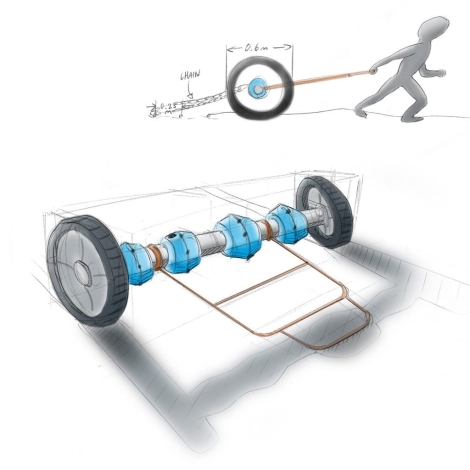
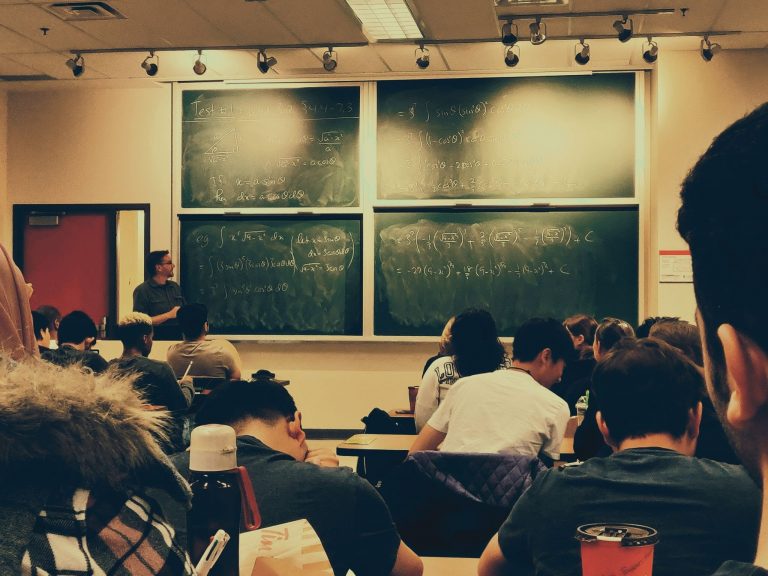
Interesting article and great work.